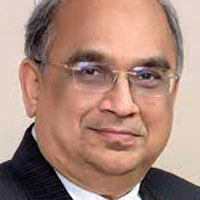Introduction
RATIONALE: The year 2022 turned out to be another challenging year for the global economy. Just as the world was riding on the strong tailwinds of a post-covid recovery, backed by a massive vaccine rollout program across the globe and a variant of the virus that was less threatening, the global economy was again plunged into uncertain territory by geo-political tensions over Ukraine.
Russia’s invasion of Ukraine and the subsequent economic sanctions imposed on Russia by the West disrupted supply chains again, spiked commodity prices, fueling a sharp rise in inflation, which was already becoming a concern in a liquidity fueled recovery environment. Central banks across geographies rushed to raise interest rates in the battle to control inflation, ending years of low interest rate regime.
High inflation, rising interest rates, geo-political concerns, created a perfect storm for emerging economies as foreign investors rushed to pull out capital and return to safe havens. Foreign institutional investors sold Indian stocks worth Rs 2.78 lakh crore in 2022, turning net sellers for the first time after four years of bullishness on the Indian market. The Rupee depreciated almost 10% against the US Dollar.
The Indian markets, however, managed to close the year on a positive note, with the Sensex closing the year 4.44% higher as the central government, the Reserve Bank of India, managed to control the fallout of the global tensions and corporate India continued to report a strong set of earnings numbers. Indian banks are likely to witness a record high credit growth of around ₹19 trillion in the current fiscal year, as per estimates by rating agency Icra. Private equity and venture capital investors pumped in almost $46 billion into India in 2022. The World Bank upgraded India's growth domestic product forecast to 6.9% from 6.5% for FY23, adding that it is well positioned to tackle global headwinds, even as it trimmed its expectation for next fiscal year to 6.6% from 7% earlier.
The Indian economy has proved to be a bright spot amid the global macroeconomic chaos that highlighted 2022.
To be sure though, the Indian economy faces several headwinds in 2023. India Inc.’s earnings growth in the third quarter of 2022-23 is likely to be a mixed bag and the robust earnings growth seen in past quarters is likely to take a brief respite. India’s startup sector continues to see challenging times as tech stocks continue to face pressure, both in the US and here in the Indian markets. The startup funding winter has caused distress in the tech space as the layoff spree that started in 2022 continues into 2023, and even the biggest tech giants such as Amazon, Facebook and Microsoft are laying off employees enmasse.
While India may appear to be the bright spot in the global economy at this moment, the biggest question on everyone’s mind is - Is India the next China? Can India take advantage of the global dislocations and emerge as the strongest emerging economy this decade?
The Mint India Investment Summit will bring together some of the most influential minds–senior policy makers, investors, industry leaders and legal luminaries–and help us understand India’s place in the current global macroeconomic environment, the opportunities that India can take advantage of and the challenges that can derail India’s journey to becoming a $5 trillion economy.








































